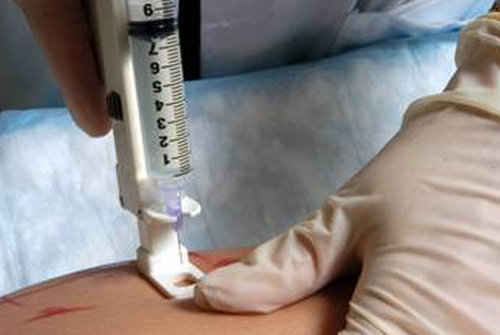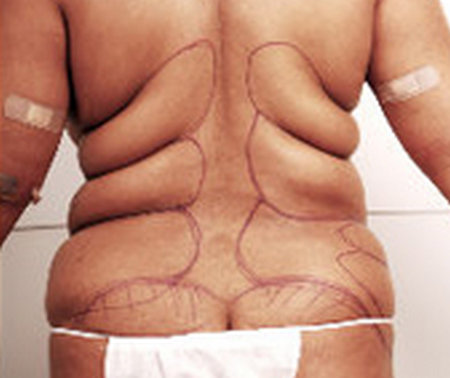Lipolysis
What is Lipolysis?
Definition : Lipolysis (1) is the process of breaking down lipids including triglycerides stored in the fat tissues to generate energy.
Today, it is a widely used non-surgical way of removing fat deposits in various parts of the body. It removes fats around the waist, chin, under the upper arms, and abdomen. (2) It is also used to combat cellulite.
Substances used during the treatment
There are two primary substances used for lipolysis and these are Phosphatidycholine (3) and Deoxycholate. They are introduced intravenously to stimulate the liver to get rid of fats and prevent fat embolism. Lipolysis gets rid of the fat deposits but does not alter the level of cholesterol and triglycerides in the blood.
The application of Phosphatidycholine and Deoxycholate is painless, but after a few minutes there will be an obvious redness, swelling, and itchy sensation on the treated part. After two hours or so, the redness will disappear, but the swelling will still be there until two weeks post treatment (4).

Picture 1 : Lipolysis in the abdomen area.
Image Source : spamedica.com

Figure 2 : A person who has a lot of love handles, being assessed and prepared for lipolysis treatment
Picture Source : www.perfectyourself.com
Is Lipolysis effective?
Lipolysis is a widely used procedure, especially in Latin America and some parts of the world. A study conducted and published in the Aesthetic Surgery Journal in 2006 revealed that 88% of more than 17,000 patients who underwent lipolysis were satisfied with the result. The final effect comes after two months (2).
Who can undergo Lipolysis?
Lipolysis is ideal for people who want to get rid of small to medium sized fat pockets in various body parts but don’t like the idea of undergoing surgery (3).
Who shouldn’t undergo Lipolysis?
- Pregnant and breastfeeding women
- People with known allergy to soy
- People with history of stroke
- People with history of blood clotting
- People who just recovered from cancer
- People who are on heart disease medication (5)
Duration and frequency of treatment
Lipolysis lasts for about half an hour. After the procedure, you can continue with your activities of daily living. There is no bump or fibrosis on the treated parts of the body. A particular area of the body may require three to four treatments to achieve desired results.
The frequency of treatment depends on the amount of fatty tissue on the patient’s body. If the fat deposit is not that extreme, then one session is enough. (6)
Lipolysis helps in removing unwanted fats in some parts of the body, but it should not be used as an alternative to liposuction. Extremely obese people should undergo liposuction (7) to thoroughly removed unwanted fats.
Lipolysis is intended for people who want to remove a small portion of fat deposits in a particular area of the body. For the lipolysis treatment to push through, the patient should be fit and healthy. Pregnant women and those with serious illnesses are highly discouraged to undergo lipolysis even if it is considered a non-invasive procedure.
Lipolysis works on small portion of fat deposits, but it requires several sessions to achieve desired results. The results can be achieved after several weeks or months of treatment. Aside from getting rid of fat deposit, lipolysis also helps improve the skin tone (6).
It tightens areas where lipolysis is done. To maintain the desired figure, patients are highly encouraged to exercise and adhere to proper diet. After the procedure, the patient can go back to their normal activities of daily living.
Techniques used in performing Lipolysis
Cold lipolysis
It is also known as cryogenic lipolysis. It reduces fat deposits using extremely low temperature. The procedure is also called fat freezing. It uses a specialized cup to draw the fat tissues to the surface using moderate vacuum. It may take several weeks to notice desired results. There will be an inflammatory reaction on the treated part because of the exposure to cold. (5)
Laser lipolysis
It is popularly called “laser lipo”, which uses a low level laser radiation, which is responsible in melting the fat tissues. The procedure is done using a small cannula containing the laser. It is inserted into the skin of the target body part. A laser is carefully applied and the cannula is moved back and forth under the skin to thoroughly dissolve the fat tissues.
The laser causes shrinkage of collage in the skin. Hence, during the laser lipolysis, you will not only get rid of unwanted fat but you will also achieve a tighten skin surface. It is only recommended in removing 500ml of fat. For larger quantity of fat, a liposuction is needed. (6)
High intensity focus ultrasound
it uses focused acoustic energy. It is applied to the subcutaneous tissues to destroy the cell membranes. The targeted fat cells will undergo necrosis without affecting the surrounding tissues.
Radiofrequency waves (7)
It uses electrical energy to significantly destroy fat tissues. The fat cells in the targeted area will eventually die without inflicting any injuries to the underlying tissues.
Fat dissolving solutions (8)
the solution is injected directly in the targeted area. It takes several sessions to disrupt fat cell membranes and dissolve its contents.
Possible risks, side effects and complications
Patients who have undergone lipolysis treatment experienced a tingling and bruising sensation of the skin. They noticed that the skin is quite sensitive to touch and a noticeable reddening of the skin. Some experienced nausea and dizziness. When it comes to complications after the procedure, it rarely happens.
A few isolated cases are there such as persistent pain, hyperpigmentation of the skin, and infection on the injected site. Numbing and burning sensation of the skin may also take place. Some even experienced scarring (6).
Lipolysis is a non-invasive procedure. Right after the treatment, the patient can go back to usual activities of daily living. However, the patient is strongly advised to refrain bathing and hot showers eight hours after the treatment. On the first week after the treatment, the patient is discouraged to exercise or even have a massage.
The procedure is not painful, but a patient may experience discomfort, especially if the patient is not comfortable with injection pricks. On the first four days post lipolysis treatment, there is an obvious swelling, redness, and burning sensation on the treated area. After a week, the bruising disappears. (4) If the patient has a low tolerance to pain, taking pain medication is advised.
References:
- https://en.wikipedia.org
- www.ncbi.nlm.nih.gov
- www.diapedia.org
- www.sciencedirect.com
- en.dermatim.net
- http://www.myfacemybody.com
- www.encyclopedia.com
- www.livestrong.com
Also see about : Lipoma
Published by Dr. Raj MD under Diseases and Conditions.
Article was last reviewed on August 6th, 2018.

